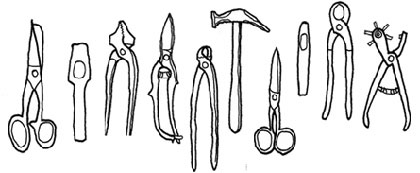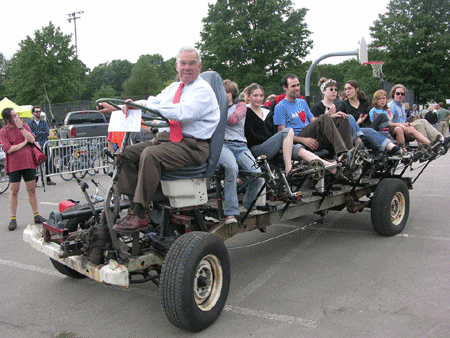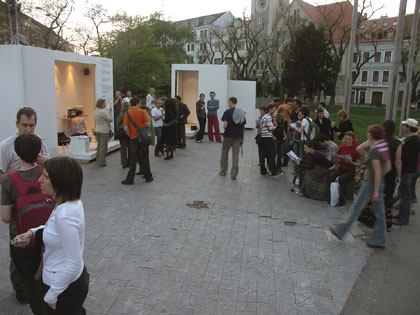
Eyal Weizman is an architect, writer and curator. Prior to being the founding director of the Centre for Research Architecture at Goldsmiths, he was Professor of Architecture at the Academy of Fine Arts in Vienna. He studied architecture at the Architectural Association in London and completed his PhD at the London Consortium, Birkbeck College. His architectural projects include the rebuilding of the Ashdod Museum of Art, stage sets for the theatre, and several prizes in architectural competitions.
Eyal has worked with a variety of NGOs and Human right groups in Israel/Palestine. The exhibition and the publication A Civilian Occupation, The Politics of Israeli Architecture he co-edited/curated was based on his human-rights research. These projects were banned by the Israeli Association of Architects, but later shown in New York, Berlin, Rotterdam, San Francisco, Malmoe, Tel Aviv and Ramallah.
Eyal has taught, lectured and organised conferences in many institutions worldwide. His books include The Politics of Verticality [forthcoming with Verso Press], A Civilian Occupation, Territories 1,2 and 3, Yellow Rhythms and many articles in journals, magazines and books. Eyal is now a Contributing Editor for Domus Magazine (Milan) and for Cabinet Magazine (New York).
Essays
Introduction to The Politics of Verticality
Eyal Weizman / 4.24.2002 / openDemocracy
None of us have a coherent mental map of the Israeli-Palestinian conflict. Architect Eyal Weizman explains why. We’re missing verticality. In this series of articles and photo-essays, he paints the extraordinary, three-dimensional battle over the West Bank: from settlements to sewage, archaeology to Apaches.
NEW.WRITING: on Eyal Weizman's "The Politics of Verticality" - The role of the Israeli architecture in the Middle East conflict
Ana Valdés / netartreview

Ariel Sharon and the Geometry of Occupation... (part 1)
Eyal Weizman / 9.9.2003 / openDemocracy
Israel’s ‘barrier’, ‘wall’, or ‘separation fence’ across the West Bank is the latest architectural expression of a twenty-year old political strategy. In a mind-opening three-part series that extends his renowned “The Politics of Verticality” into a new dimension, Eyal Weizman offers a penetrating analysis of how ideas about power, security and planning intersect with politics to shape the spaces in which the Israeli-Palestinian conflict develops.
(part 2) (part 3)
The Art of War
Eyal Weizman / Frieze
The Israeli Defence Forces have been heavily influenced by contemporary philosophy, highlighting the fact that there is considerable overlap among theoretical texts deemed essential by military academies and architectural schools.
The Wall and the Eye: An Interview with Eyal Weizman
Sina Najafi and Jeffrey Kastner
Cabinet Magazine / Winter 2002-03
One of history's most fiercely contested landscapes, the 2,270 square miles of territory known as the West Bank was under the control of Jordan when it was occupied by Israel during the 1967 Six-Day War. Over the last 35 years, the area has become home to some 200,000 Israelis (400,000 including occupied East Jerusalem) who populate numerous, new, purpose-built settlements perched on its hilltops, overlooking long-established Palestinian lowland communities. This ongoing state-sponsored policy of expansion onto the high ground has been paralleled by the development, within the architectural and urban planning professions, of extremely particularized strategies for building on heights. Many of these draw on historical precedents; all are designed to provide basic municipal amenities within a context of highly refined, surveillance-based security.
Military Operations as Urban Planning
Phillip Misselwitz and Eyal Weizman
Mute Magazine / August 2003
According to Israeli architect Eyal Weizman, cities have always reflected the dominant military techniques of their times. With the demise of the linear warfare between nation states and the advent of non-linear wars waged against internal ‘terrorists’, cities have become our primary ‘battle spaces’. Here, Phillip Misselwitz talks to Weizman about the (mis)uses of the urban fabric by the military, and the premeditative assimilation of planning into the choreography of war.

Commitment
Eyal Weizman
32 Magazine / Issue 7
There is an architecture to politics in as much as there is a politics to architecture. This analogy describes a reciprocal relation between two disciplines and two mediums of social production. If the politics of architecture describe the mechanisms by which social, economic, national, and strategic forces solidify into the organization, form, and ornamentation of homes and cities, then the architecture of politics could describe the spatial organization of public action. Politics is carried out through the imagination, representation, construction, organization, transformation, erasure, and subversion of space. Space is thus not formed as a consequence of politics, but is the very medium within which politics is conducted.
Lethal Theory
Eyal Weizman
The fact that most contemporary military operations are staged in cities suggests an urgent need to reflect on an emergent relationship between armed conflicts and the built environment. Contemporary urban warfare plays itself out within a constructed, real or imaginary architecture, and through the destruction, construction, reorganization, and subversion of space. As such, the urban environment is increasingly understood by military thinkers not simply as the backdrop for conflict, nor as its mere consequence, but as a dynamic field locked in a feedback-based relationship with the diverse forces operating within it – local populations, soldiers, guerrilla fighters, journalists and photographers, and humanitarian agents. This essay belongs to a larger investigation of the ways in which contemporary military theorists are conceptualizing the urban domain. What are the terms they are using to think about cities? What does the language employed by the military to describe the city to themselves (for example, at international conferences dealing with urban warfare) and to the general public (most often through the media) tell us about the relationship between organized violence and the production of space? What does this language tell us about the military as an institution? Not least important is the question of the role of theory in all these operations.
Lay of the Land / A new map of the West Bank reveals a troubling phenomenon: urban sprawl as human-rights abuse.
Stephen Zacks
Metropolis Magazine / February 2003
You would have a hard time finding an architect in East or West Jerusalem, Ramallah, or Tel Aviv not armed with a map. Sometimes it is a private mental image of the places he or she knew before the landscape was divided, but more often it is a literal map indicating demographic changes or the Israeli line of control's movement during the past half-century. Israeli architect Eyal Weizman is no exception. Designed for the human rights group B'tselem after a year of site visits and helicopter reconnaissance, his map documents the material reality of the West Bank with painstaking accuracy. Rendered in color-coded splotches are the boundaries of Palestinian and Israeli habitations in the territory occupied by Israel since 1967 - and the plans for further colonization. It's a graphic illustration of a struggle waged as much in bricks and mortar as with bombs and machine guns.
Making an exhibition (A volumetric survey of land use in the Israeli Occupied Territories)
Kate Rich
Mute Magazine / September 2003
National outrage can be a trigger for an eloquent art show. With a catalogue entitled LAND GRAB, Israeli architects Eyal Weizman and Rafi Segal secured the cancellation of their architectural project, 'A Civilian Occupation: the Politics of Israeli Architecture', as Israel's official entry in the World Congress of Architecture (Berlin, 2002). It was banned by the same Israeli Association of United Architects who had commissioned it. Here, as one of several other participants in the Territories exhibition in which Weizman and Segal took part, Kate Rich asks how, and why, their use of aggregated data is so devastatingly effective in a contemporary art setting.
The Wall: Settlement archeology
Eyal Weizman in conversation with Markus Miessen
Bidoun / Spring 2005
Between City and Desert
Manuel Herz and Eyal Weizman
A bizarre madness seems to have taken hold of a north London suburb, with predictions of pitched battles on Hampstead Heath and warnings of Bosnian-style ethnic disintegration.
Congrats to Eyal Weizman / Subtopia
Interview Eyal Weizman / An Architektur
Roundtable: Research Architecture / Goldsmiths
Can spatial practice become a form of research? Might the notion of architecture be expanded to engage with questions of culture, politics, conflict and human rights? This new and innovative research centre brings together architects, urbanists, filmmakers, curators and other cultural practitioners from around the world to work collaboratively around questions of this kind.
Eyal Weizman's blog
Land Grab: Israel's Settlement Policy in the West Bank / May 2002 / B'Tselem - The Israeli Information Center for Human Rights in the Occupied Territories

Exhibitions
Territories @ Witte de With, Rotterdam (Images)
Territories @ KW Institute for Contemporary Art, Berlin
Eyal Weizman: Clinton's Proposal for the Temple Mount during the Camp David Negotiations, 2000 / Montage: Wulf Walter Böttger, 2003
Video
Dictionary of War
Dictionary of war is a collaborative platform for creating 100 concepts on the issue of war, to be invented, arranged and presented by scientists, artists, theorists and activists at four public, two-day events in Frankfurt, Munich, Graz and Berlin. The aim is to create key concepts that either play a significant role in current discussions of war, have so far been neglected, or have yet to be created.
Exergue / Munich / Saturday, July 22 2006
Flexibility / Frankfurt / Friday, June 2, 2006
The Politics of Verticality: Architecture and Occupation in the West Bank / Eyal Weizman / Rice University / March 18, 2004













